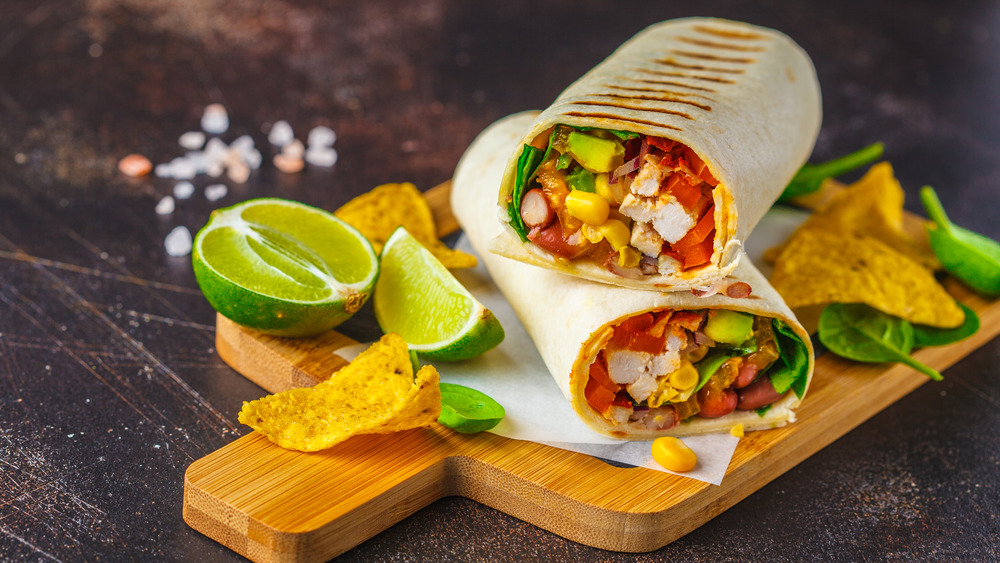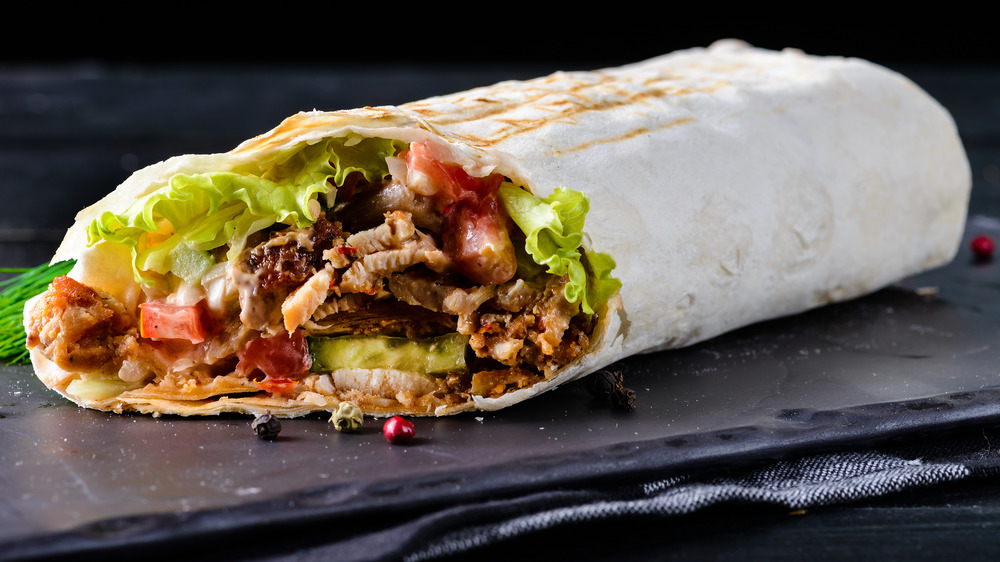How Authentic Burritos Are Different From The American Version
You've heard the saying "bigger is better," and when it comes to food, America has truly taken that aphorism to heart. Whether you want the largest hamburger imaginable, buckets of fried chicken, or massive slices of pizza, you can graze on your favorite super-sized treats to your heart's content. Now imagine a typical burrito you could pick up at any restaurant in your town — in terms of size and fillings, it probably weighs at least a pound and comes with every filling you could imagine. While this style of burrito dominates the market, the classic wrap's Mexican original looks strikingly different. According to Food Timeline, the U.S. didn't see our current iconic vision of the burrito enter the culinary landscape until at least the 1960s.
To understand the major differences between the current incarnation of the burrito we can get at our local Chipotle and the burrito that exists south of the border, understanding the origins of the American burrito remains essential. According to The Daily Meal, our current idea of burritos we know and love originated in San Francisco's Mission District. Due to their popularity, The rest of the U.S. took notice and the spread of the meal began. If you travel along the west coast and through the southwest, you can still find a wider variety of burrito types that evolved to fit the culinary landscape of the particular areas and feature smaller tortillas with a wide variety of fillings unseen anywhere else (via Washington Post).
Mexican burritos have a much simpler recipe
Once you cross the border and discover what a traditional burrito entails, you won't believe your eyes. According to The Daily Meal, these miniscule rolls typically consist of a flour tortilla, and a scant few fillings that differ from region to region. Typically, the average Mexican burrito contains just refried beans, one type of meat, and maybe a sprinkling of cheese, while certain regions have been known to fill their wraps with potatoes, chorizo, grilled cactus, or roasted peppers. Don't expect to find any massive burritos loaded with rice, lettuce, and salsa.
If you like to order tacos at a restaurant, you know that you need to grab several in order to round out a meal. The original burrito operates in the same capacity—each wrap gets tightly rolled and has a size comparable to that of a tamale, so ordering a few is a must. Compared to American burritos that keep you full all day, these originals seem a far cry from the Tex-Mex favorites we know and love. Next time you go out to your local taco shop, take note of all the fillings you can get in a burrito and appreciate the differences for yourself.

